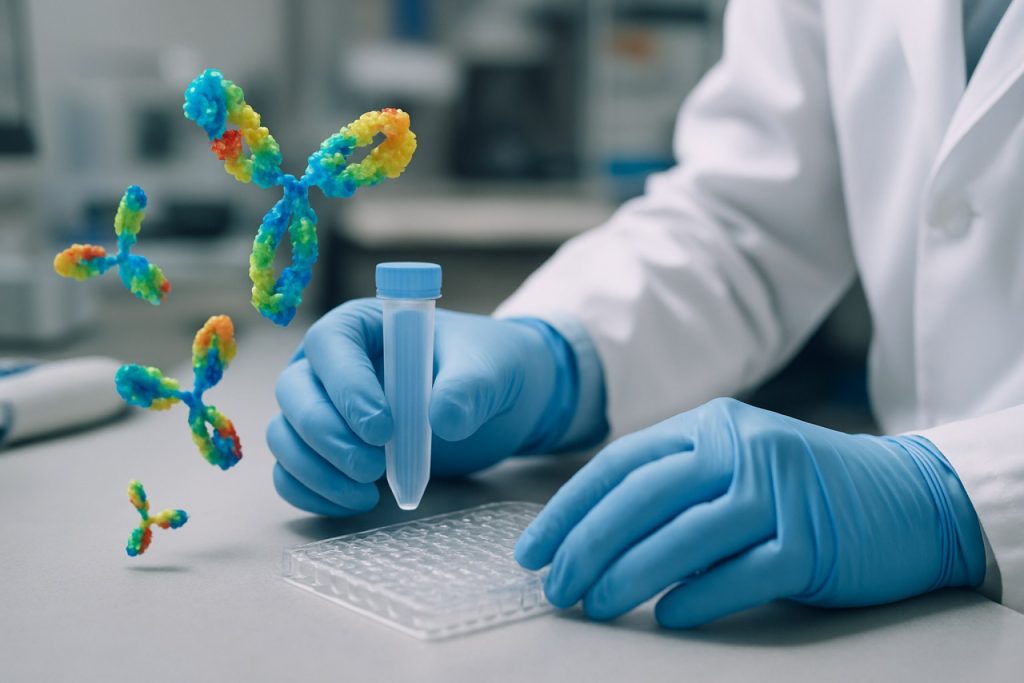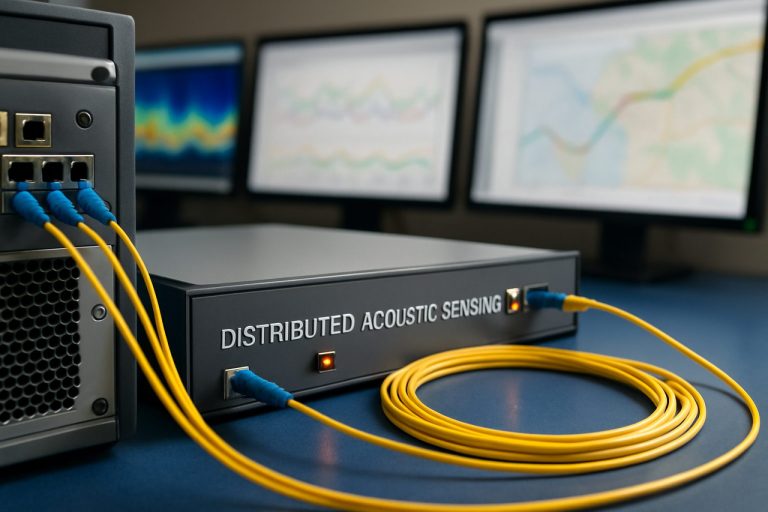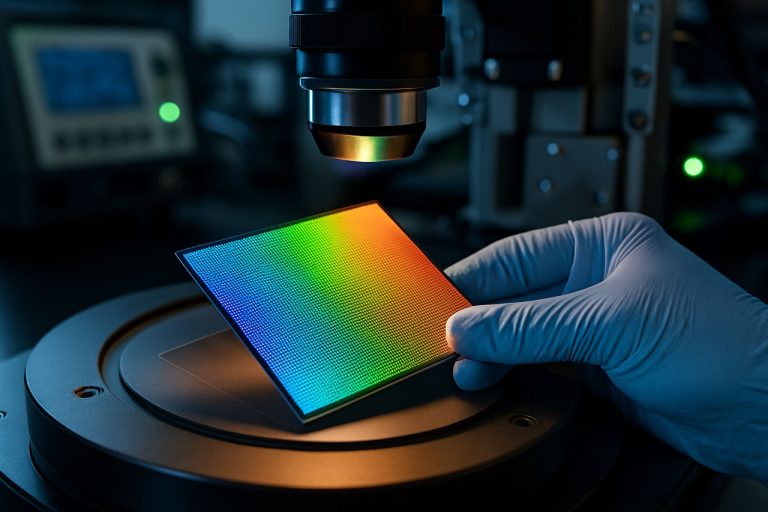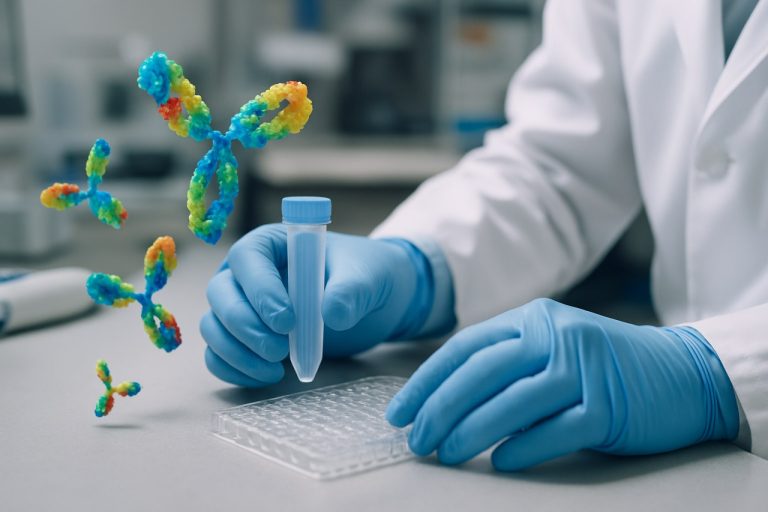
Synthetic Antibody Library Technologies in 2025: Unleashing Next-Gen Biotherapeutics and Accelerating Drug Discovery. Explore How Advanced Platforms Are Shaping the Future of Precision Medicine.
- Executive Summary: Key Trends and Market Drivers in 2025
- Market Size, Growth Forecasts, and 18% CAGR Outlook Through 2029
- Technology Landscape: Phage Display, Yeast Display, and Beyond
- Leading Players and Innovators: Company Profiles and Strategies
- Applications in Drug Discovery, Diagnostics, and Therapeutics
- Regulatory Environment and Industry Standards
- Emerging Markets and Regional Opportunities
- Challenges: Intellectual Property, Scalability, and Quality Control
- Future Outlook: AI Integration and Next-Generation Library Design
- Case Studies: Breakthroughs from Industry Leaders (e.g., abcam.com, genScript.com, creativebiolabs.com)
- Sources & References
Executive Summary: Key Trends and Market Drivers in 2025
Synthetic antibody library technologies are poised for significant advancement and market expansion in 2025, driven by the convergence of high-throughput screening, artificial intelligence (AI), and next-generation sequencing. These technologies enable the rapid discovery and optimization of monoclonal antibodies with tailored specificity and affinity, bypassing the limitations of traditional animal immunization methods. The global biopharmaceutical sector’s increasing demand for novel therapeutics, diagnostics, and research reagents is a primary driver, with synthetic libraries offering scalability, reproducibility, and the ability to target challenging antigens.
Key industry players are investing heavily in the development and commercialization of proprietary synthetic antibody libraries. Abcam plc continues to expand its synthetic antibody portfolio, leveraging phage display and advanced library design to accelerate antibody discovery for both research and clinical applications. Twist Bioscience Corporation is recognized for its DNA synthesis platform, which underpins the construction of highly diverse and customizable synthetic libraries, supporting rapid candidate identification and optimization. Adimab LLC remains a leader in yeast-based display technologies, offering end-to-end antibody discovery services for pharmaceutical partners worldwide.
The integration of AI and machine learning is a defining trend in 2025, with companies such as AbCellera Biologics Inc. and Adimab LLC deploying computational tools to design libraries with enhanced diversity and develop predictive models for antibody-antigen interactions. This digital transformation is expected to reduce discovery timelines and improve the developability of antibody candidates, addressing manufacturability and immunogenicity concerns early in the pipeline.
Regulatory agencies are increasingly recognizing the robustness and reproducibility of synthetic antibody libraries, facilitating their adoption in therapeutic antibody development. The COVID-19 pandemic underscored the value of rapid antibody discovery platforms, accelerating partnerships between technology providers and major pharmaceutical companies. In 2025, collaborations and licensing agreements are expected to intensify, with synthetic library providers forming strategic alliances to expand their reach and capabilities.
Looking ahead, the synthetic antibody library market is set for robust growth, propelled by advances in automation, miniaturization, and data analytics. The ability to generate fully human antibodies, target previously intractable epitopes, and streamline the path from discovery to clinical candidate selection positions synthetic libraries as a cornerstone technology in the evolving landscape of biologics and precision medicine.
Market Size, Growth Forecasts, and 18% CAGR Outlook Through 2029
The synthetic antibody library technologies market is experiencing robust growth, driven by increasing demand for next-generation biologics, rapid advancements in protein engineering, and the expanding applications of antibody therapeutics in oncology, autoimmune diseases, and infectious diseases. As of 2025, the global market for synthetic antibody libraries is estimated to be valued in the low-to-mid single-digit billion USD range, with leading industry participants reporting strong year-over-year revenue growth from antibody discovery platforms and related services.
Key players in this sector include Abcam plc, which offers synthetic antibody libraries and custom antibody discovery services, and Twist Bioscience Corporation, recognized for its high-throughput DNA synthesis and synthetic antibody library construction capabilities. Thermo Fisher Scientific Inc. and Creative Biolabs are also prominent, providing comprehensive antibody library generation, screening, and optimization services to pharmaceutical and biotechnology companies worldwide.
The market is projected to grow at a compound annual growth rate (CAGR) of approximately 18% through 2029, reflecting the accelerating adoption of synthetic libraries over traditional hybridoma and animal immunization methods. This growth is underpinned by the ability of synthetic libraries to deliver highly diverse antibody repertoires, enable rapid hit identification, and support the development of fully human or humanized antibodies with improved specificity and reduced immunogenicity. The increasing integration of artificial intelligence and machine learning into antibody design and screening workflows is expected to further enhance the efficiency and success rates of antibody discovery, fueling additional market expansion.
Geographically, North America and Europe remain the largest markets, supported by the presence of major biopharmaceutical companies, advanced research infrastructure, and favorable regulatory environments. However, Asia-Pacific is anticipated to witness the fastest growth over the next few years, driven by rising investments in biotechnology, expanding R&D activities, and the emergence of regional players offering competitive synthetic antibody library solutions.
Looking ahead, the synthetic antibody library technologies market is poised for continued innovation and consolidation. Strategic collaborations between technology providers, pharmaceutical companies, and academic institutions are expected to accelerate the translation of synthetic antibody leads into clinical candidates. As the pipeline of antibody-based therapeutics expands and new modalities such as bispecifics and antibody-drug conjugates gain traction, the demand for advanced synthetic library platforms is set to remain strong through 2029 and beyond.
Technology Landscape: Phage Display, Yeast Display, and Beyond
The landscape of synthetic antibody library technologies in 2025 is characterized by rapid innovation, with phage display and yeast display remaining foundational, while new platforms and refinements are expanding the sector’s capabilities. Synthetic antibody libraries—collections of engineered antibody genes—are essential for the discovery of therapeutic and diagnostic antibodies, offering advantages in diversity, specificity, and speed over traditional immunization-based methods.
Phage display technology, pioneered in the late 1980s, continues to dominate the field due to its robustness and scalability. In 2025, leading companies such as AbbVie (through its acquisition of the original phage display innovator, Abgenix) and Amgen are leveraging large, highly diverse synthetic libraries to accelerate antibody discovery pipelines. These libraries, often containing up to 1011 unique variants, enable the rapid identification of high-affinity binders against challenging targets, including those relevant to oncology and infectious diseases.
Yeast display, which utilizes the eukaryotic yeast system to present antibody fragments on the cell surface, has gained traction for its ability to facilitate affinity maturation and functional screening in a more physiologically relevant context. Companies such as Adimab have established proprietary yeast display platforms, enabling the generation of fully human antibodies with optimized biophysical properties. Adimab’s technology is widely licensed by major pharmaceutical partners, reflecting the platform’s flexibility and efficiency.
Beyond phage and yeast display, 2025 is witnessing the emergence of alternative display systems and next-generation synthetic library designs. Mammalian cell display, for example, is being advanced by organizations like Twist Bioscience, which combines high-throughput DNA synthesis with mammalian expression systems to produce libraries that better mimic native antibody folding and post-translational modifications. This approach is particularly valuable for developing antibodies with complex functionalities or improved developability profiles.
The integration of artificial intelligence and machine learning is also reshaping the design and screening of synthetic libraries. Companies such as AbCellera are incorporating computational tools to predict antibody-antigen interactions and optimize library diversity, further accelerating the discovery process.
Looking ahead, the synthetic antibody library sector is expected to see continued convergence of display technologies, automation, and computational design. This will likely result in even faster timelines from target identification to clinical candidate selection, supporting the growing demand for novel biologics in areas such as immuno-oncology, infectious diseases, and autoimmune disorders.
Leading Players and Innovators: Company Profiles and Strategies
The synthetic antibody library sector in 2025 is characterized by rapid innovation, strategic partnerships, and a focus on expanding the diversity and functionality of antibody repertoires. Leading companies are leveraging advanced molecular biology, automation, and artificial intelligence to accelerate antibody discovery and optimization, with a strong emphasis on therapeutic and diagnostic applications.
One of the most prominent players is AbbVie, which, through its acquisition of Allergan and its legacy of Humira, continues to invest in next-generation antibody libraries. AbbVie’s research integrates synthetic library technologies with high-throughput screening to identify candidates for immuno-oncology and autoimmune diseases. The company’s strategy includes collaborations with academic institutions and biotech startups to access novel library designs and screening platforms.
Another key innovator is Adimab, recognized for its yeast-based synthetic antibody discovery platform. Adimab’s technology enables the rapid generation of fully human antibodies with high affinity and specificity. The company has established partnerships with over 100 pharmaceutical and biotechnology firms, providing customized antibody discovery services and licensing its platform for in-house use. Adimab’s business model emphasizes flexibility, offering both fee-for-service and milestone-based agreements.
Twist Bioscience is a leader in DNA synthesis and has developed large-scale, highly diverse synthetic antibody libraries. Twist’s proprietary silicon-based DNA synthesis platform allows for the rapid and cost-effective creation of libraries with billions of unique sequences. The company collaborates with pharmaceutical partners to accelerate antibody lead identification and optimization, and its libraries are increasingly used in both therapeutic and diagnostic development pipelines.
In Europe, Merck KGaA (operating as MilliporeSigma in the US and Canada) is advancing synthetic antibody library technologies through its comprehensive suite of research tools and services. Merck’s focus includes the development of synthetic nanobody libraries, which are gaining traction for their stability and ease of engineering, particularly in cell and gene therapy applications.
Looking ahead, the sector is expected to see further integration of machine learning and automation, enabling the design of libraries with enhanced developability and reduced immunogenicity. Strategic alliances between technology providers and pharmaceutical companies are likely to intensify, as the demand for novel biologics continues to grow. The competitive landscape will be shaped by the ability to deliver highly diverse, functional libraries and to streamline the path from discovery to clinical candidate.
Applications in Drug Discovery, Diagnostics, and Therapeutics
Synthetic antibody library technologies have become pivotal in advancing drug discovery, diagnostics, and therapeutic development, with 2025 marking a period of rapid innovation and commercial expansion. These libraries, constructed through in vitro synthesis and diversification of antibody gene sequences, enable the rapid identification of high-affinity binders against a wide array of targets, including those considered “undruggable” by traditional methods.
In drug discovery, synthetic antibody libraries are increasingly used to generate monoclonal antibodies (mAbs) with tailored specificity and affinity. Companies such as AbbVie and Amgen have integrated synthetic library platforms into their biologics pipelines, accelerating the lead identification process and expanding the diversity of candidate molecules. Notably, Adimab has established itself as a leader in yeast-based synthetic antibody libraries, partnering with over 100 pharmaceutical and biotechnology firms to deliver optimized antibody candidates for both oncology and immunology indications.
Diagnostics is another area witnessing significant impact. Synthetic antibody libraries facilitate the rapid development of highly specific reagents for use in diagnostic assays, including point-of-care and high-throughput platforms. Creative Biolabs and Twist Bioscience offer custom synthetic antibody libraries and screening services, enabling the creation of novel diagnostic tools for infectious diseases, cancer biomarkers, and autoimmune disorders. The ability to engineer antibodies with enhanced stability and reduced cross-reactivity is particularly valuable for next-generation diagnostic applications.
Therapeutically, synthetic antibody libraries underpin the development of bispecific antibodies, antibody-drug conjugates (ADCs), and other advanced modalities. Genmab has leveraged synthetic libraries to develop bispecific antibody platforms, such as DuoBody®, which are now in clinical trials for hematological malignancies and solid tumors. Similarly, IONTAS specializes in mammalian display libraries, supporting the generation of antibodies with optimal developability profiles for therapeutic use.
Looking ahead, the next few years are expected to see further integration of artificial intelligence and machine learning with synthetic antibody library design, enhancing the prediction of antibody-antigen interactions and streamlining candidate selection. The continued expansion of library diversity, coupled with automation and high-throughput screening, is poised to reduce development timelines and costs, broadening the accessibility of antibody-based solutions across the pharmaceutical and diagnostics sectors.
Regulatory Environment and Industry Standards
The regulatory environment for synthetic antibody library technologies is evolving rapidly as these platforms become increasingly central to biopharmaceutical discovery and development. In 2025, regulatory agencies such as the U.S. Food and Drug Administration (FDA) and the European Medicines Agency (EMA) are intensifying their focus on the quality, traceability, and reproducibility of antibodies derived from synthetic libraries. This is in response to the growing number of clinical candidates and approved therapeutics that originate from these technologies.
A key regulatory consideration is the characterization and documentation of the synthetic library itself. Agencies require detailed information on library design, diversity, and the methods used for selection and screening. Companies like Abcam and Twist Bioscience—both major suppliers of synthetic antibody libraries—have responded by implementing rigorous quality management systems and providing comprehensive data packages to support regulatory submissions. These include next-generation sequencing (NGS) data to demonstrate library diversity and integrity, as well as standardized protocols for antibody selection and validation.
Industry standards are also being shaped by organizations such as the International Organization for Standardization (ISO), which is working towards harmonized guidelines for the production and quality control of recombinant antibodies. In parallel, industry consortia and working groups are collaborating to establish best practices for the use of synthetic libraries in therapeutic development. For example, Thermo Fisher Scientific and Merck KGaA (operating as MilliporeSigma in the U.S. and Canada) are actively involved in such initiatives, leveraging their expertise in antibody engineering and manufacturing.
Looking ahead, the regulatory landscape is expected to become more stringent, with increased emphasis on data transparency, traceability of antibody sequences, and the minimization of immunogenicity risks. The adoption of digital tools for library tracking and the integration of artificial intelligence in antibody selection are likely to be encouraged by regulators, provided that robust validation frameworks are in place. Companies that proactively align with emerging standards and invest in advanced quality control technologies are expected to gain a competitive advantage as the market for synthetic antibody-based therapeutics continues to expand.
Overall, the next few years will see a convergence of regulatory requirements and industry standards, driving higher levels of quality and reliability in synthetic antibody library technologies. This will not only facilitate smoother regulatory approvals but also foster greater confidence among developers and end-users in the safety and efficacy of antibody therapeutics derived from synthetic libraries.
Emerging Markets and Regional Opportunities
The global landscape for synthetic antibody library technologies is rapidly evolving, with emerging markets in Asia-Pacific, Latin America, and the Middle East showing significant potential for growth in 2025 and the coming years. Historically dominated by North American and European players, the sector is witnessing increased investment and technological adoption in regions previously considered peripheral to antibody discovery and engineering.
In Asia-Pacific, China and South Korea are at the forefront of this shift. Chinese biotechnology firms are leveraging government support and expanding R&D infrastructure to develop proprietary synthetic antibody libraries, aiming to reduce reliance on Western technologies. Companies such as WuXi AppTec are investing in antibody discovery platforms and collaborating with global pharmaceutical partners to accelerate therapeutic development. South Korea’s Samsung Biologics is also expanding its capabilities in antibody engineering, positioning itself as a regional hub for biopharmaceutical innovation.
India is emerging as a key player, with a growing number of contract research organizations (CROs) and biotech startups entering the synthetic antibody space. The country’s large pool of scientific talent and cost-effective operations are attracting international collaborations, particularly for early-stage antibody screening and optimization.
In Latin America, Brazil and Mexico are making strategic investments in biotechnology infrastructure. National initiatives to foster innovation in biologics are beginning to bear fruit, with local companies seeking partnerships to access advanced synthetic library technologies. While the region’s market share remains modest, the increasing prevalence of chronic diseases and a growing pharmaceutical sector are expected to drive demand for antibody-based therapeutics.
The Middle East, particularly the United Arab Emirates and Saudi Arabia, is investing in biotechnology as part of broader economic diversification strategies. These countries are establishing research centers and offering incentives to attract global biotech firms, with a focus on building local expertise in antibody discovery and development.
Looking ahead, the expansion of synthetic antibody library technologies into these emerging markets is expected to foster greater innovation and competition. Regional players are likely to focus on developing libraries tailored to local disease profiles and regulatory environments, while also seeking to integrate artificial intelligence and automation to enhance screening efficiency. As intellectual property frameworks mature and cross-border collaborations increase, these regions are poised to play a more prominent role in the global antibody discovery ecosystem.
Challenges: Intellectual Property, Scalability, and Quality Control
Synthetic antibody library technologies have become a cornerstone of modern therapeutic and diagnostic antibody discovery, but their rapid evolution brings significant challenges in intellectual property (IP), scalability, and quality control—issues that are expected to shape the sector through 2025 and beyond.
Intellectual Property (IP) Complexity
The landscape for IP in synthetic antibody libraries is increasingly complex. As more companies develop proprietary library designs, unique scaffolds, and novel selection methods, the risk of overlapping patents and freedom-to-operate disputes rises. Major industry players such as AbbVie, Amgen, and Ionis Pharmaceuticals have invested heavily in both in-house and partnered library technologies, leading to a dense web of patents. The expiration of foundational patents (e.g., on phage display) has opened the field, but new filings on synthetic diversity generation and display formats continue to emerge. In 2025, companies are expected to increasingly rely on cross-licensing and strategic partnerships to navigate this environment, while litigation risk remains high for new entrants and smaller firms.
Scalability and Manufacturing Bottlenecks
Scaling synthetic antibody libraries from research to clinical-grade production presents technical and logistical hurdles. The construction of highly diverse libraries (often exceeding 1010 variants) requires advanced DNA synthesis and high-throughput screening infrastructure. Leading suppliers such as Twist Bioscience and Agilent Technologies have expanded their capabilities in automated oligonucleotide synthesis and next-generation sequencing, enabling larger and more diverse libraries. However, the cost and complexity of maintaining quality and diversity at scale remain significant. In 2025, further automation and integration of AI-driven design are anticipated to improve throughput, but the need for robust process validation and reproducibility will continue to challenge both established and emerging players.
Quality Control and Regulatory Scrutiny
Ensuring the functional quality and safety of antibodies derived from synthetic libraries is under increasing regulatory scrutiny. Agencies are demanding more comprehensive characterization of library diversity, sequence liabilities, and developability profiles. Companies such as Abcam and Thermo Fisher Scientific have invested in advanced analytics, including deep sequencing and high-throughput biophysical screening, to address these requirements. In the next few years, the adoption of standardized quality metrics and digital traceability is expected to become industry norm, driven by both regulatory expectations and the need to ensure reproducibility in clinical applications.
Overall, while synthetic antibody library technologies are poised for continued growth, the sector’s trajectory through 2025 will be shaped by how effectively companies address these intertwined challenges of IP, scalability, and quality control.
Future Outlook: AI Integration and Next-Generation Library Design
The integration of artificial intelligence (AI) and machine learning (ML) into synthetic antibody library technologies is poised to accelerate innovation and efficiency in antibody discovery throughout 2025 and the coming years. Traditional synthetic antibody libraries, which rely on rational design and combinatorial diversity, are now being enhanced by AI-driven algorithms that can predict optimal sequence diversity, structural stability, and antigen-binding specificity. This convergence is expected to yield libraries with higher functional diversity and improved developability profiles, addressing longstanding challenges such as immunogenicity and manufacturability.
Several leading biotechnology companies are at the forefront of this transformation. AbCellera Biologics has publicly emphasized the use of advanced computational methods, including AI, to design and screen antibody libraries with greater precision and speed. Their platform leverages large-scale data integration and deep learning to identify rare, high-affinity antibodies from vast synthetic repertoires. Similarly, Adimab continues to refine its yeast-based synthetic antibody libraries, incorporating in silico modeling to optimize library diversity and reduce downstream liabilities.
Another notable player, Twist Bioscience, utilizes its proprietary silicon-based DNA synthesis technology to construct highly diverse and customizable synthetic antibody libraries. The company has announced ongoing efforts to integrate AI-guided design principles, enabling the rapid generation of libraries tailored to specific therapeutic targets and modalities. This approach is expected to shorten discovery timelines and improve the success rate of lead candidate identification.
Looking ahead, the next few years will likely see the emergence of fully automated, closed-loop antibody discovery platforms. These systems will combine high-throughput DNA synthesis, AI-driven library design, and automated screening, creating a seamless workflow from in silico design to functional validation. Industry collaborations and partnerships with technology providers are anticipated to accelerate this trend, as companies seek to harness the full potential of AI for next-generation antibody therapeutics.
In summary, the future of synthetic antibody library technologies is being shaped by the integration of AI and next-generation design strategies. As these tools mature, they are expected to deliver libraries with unprecedented diversity, specificity, and developability, ultimately expanding the therapeutic landscape and enabling the rapid development of novel biologics for a wide range of diseases.
Case Studies: Breakthroughs from Industry Leaders (e.g., abcam.com, genScript.com, creativebiolabs.com)
Synthetic antibody library technologies have become a cornerstone of modern therapeutic and diagnostic antibody discovery, with industry leaders driving significant breakthroughs in recent years. As of 2025, the field is characterized by the integration of advanced design algorithms, high-throughput screening, and automation, enabling the rapid generation of highly diverse and functional antibody repertoires.
One of the most prominent players, Abcam plc, has leveraged synthetic antibody libraries to expand its catalog of recombinant antibodies for research and clinical applications. Abcam’s approach combines rational library design with phage and yeast display platforms, allowing for the selection of antibodies with high specificity and affinity against challenging targets, including post-translationally modified proteins and conformational epitopes. Their recent collaborations with academic and pharmaceutical partners have resulted in the development of next-generation antibodies for oncology and neurodegenerative disease research, with several candidates advancing to preclinical validation in 2024 and 2025.
Another industry leader, GenScript Biotech Corporation, has made significant strides in synthetic antibody library construction and screening. GenScript’s proprietary Opto-mAb™ and phage display libraries are engineered to maximize sequence diversity and functional expression. In 2023–2025, GenScript reported the successful identification of therapeutic antibody leads against emerging infectious diseases and immune-oncology targets, with several projects entering IND-enabling studies. The company’s integration of artificial intelligence for library design and hit selection has further accelerated the discovery process, reducing timelines from months to weeks.
Creative Biolabs has also emerged as a key innovator, offering custom synthetic antibody library services tailored to client specifications. Their libraries, including humanized, fully human, and camelid single-domain (VHH) formats, are widely used for both therapeutic and diagnostic development. In 2024, Creative Biolabs announced the launch of a next-generation synthetic nanobody library, which has already yielded high-affinity binders for use in CAR-T cell therapy and targeted drug delivery systems. The company’s collaborations with biotechnology startups and pharmaceutical firms have resulted in several licensing agreements and co-development projects, underscoring the commercial and translational impact of synthetic library technologies.
Looking ahead, the synthetic antibody library sector is poised for continued growth, driven by advances in machine learning, automation, and synthetic biology. Industry leaders are expected to further enhance library diversity, screening throughput, and develop novel antibody formats, supporting the rapid translation of antibody leads into clinical candidates and commercial products.
Sources & References
- Twist Bioscience Corporation
- AbCellera Biologics Inc.
- Thermo Fisher Scientific Inc.
- Adimab
- Genmab
- WuXi AppTec
- Samsung Biologics



